So, is this investment in bots paying off, and if so – how come? Here’s more on why chatbots are proving a popular tactic for fashion and beauty brands.
(N.B. If you’re interested in marketing applications of AI, Econsultancy’s Supercharged conference takes place in London on May 1, 2018 and is chocked full of case studies and advice on how to build out your data science capability. Speakers come from Ikea, Danske Bank, Just Eat, Age UK, RBS and more)
Try before you buy
We’ve seen many brands launch chatbots in the hope that social media users will naturally want to interact and engage with them in one of their most frequently-used channels – i.e. Facebook. However, it’s clear that occupying this space is simply not enough, as many bots have failed to offer users anything of real value, or a reason to come back after an initial conversation.
Take the Whole Foods bot, for example, which replies to emojis with recipe ideas. It’s a bit of fun initially, perhaps, but is it enough to overtake regular search for serious recipe-seekers? Probably not.
For fashion and beauty brands, chatbots can solve a much more tangible problem, and something that has always been a barrier for ecommerce. That is the issue of not being able to try a product before ordering it online. This is especially pertinent in the beauty industry, where matching to skin-tone and colour also comes into play.
It is through the integration of AR into chatbots that beauty brands are able to solve this, with bots able to help users find the right shade of lipstick or foundation based on a photo.
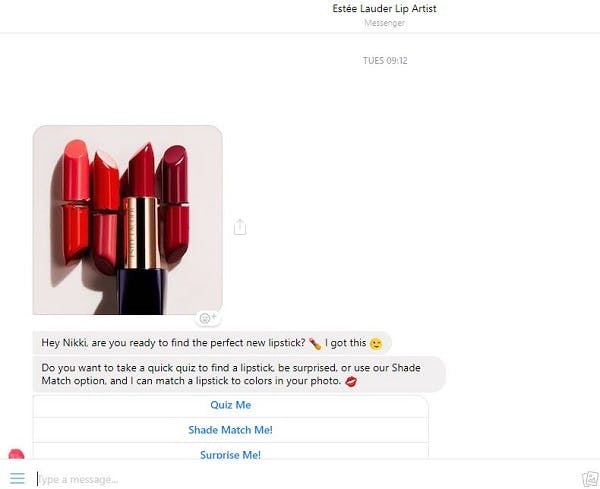
Estee Lauder’s lip artist chatbot is one decent example of this technology. By giving the option of a lip shade (and showing what it might look like in real life), the user is naturally prompted into making a purchase. This mirrors the in-store beauty experience, whereby trying out a product provides reassurance and instils desire.
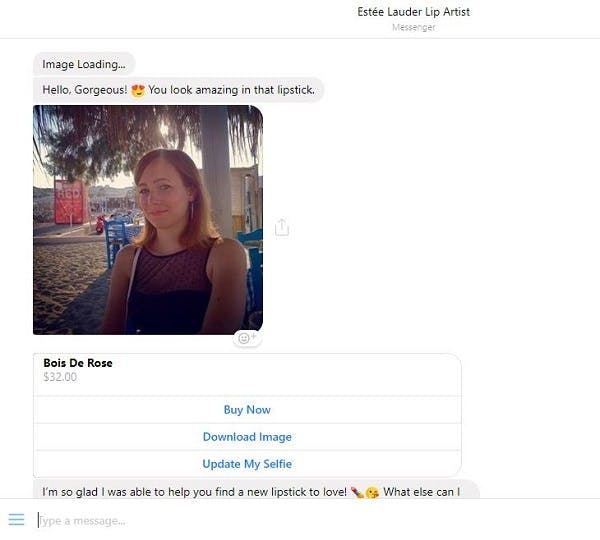
An online stylist
For fashion brands, the ability to ‘try before you buy’ is limited, with AR and clothing proving a much trickier combination. However, one way fashion and ecommerce brands can tap into consumer need is by offering personal styling tips and advice. This also means that brands can combine general customer service with personalised recommendations, which again aims to replicate what an in-store employee might provide.
There are limitations to this of course, with success largely depending on how advanced or slick the technology is. The best examples tend to be those which – instead of offering users a general selection of products based on broad categories – help consumers to narrow down to one specific item.
One example of this is the Levi’s Virtual Stylist, which asks users questions about size, preference of fit etc. in order to suggest the right pair of jeans.
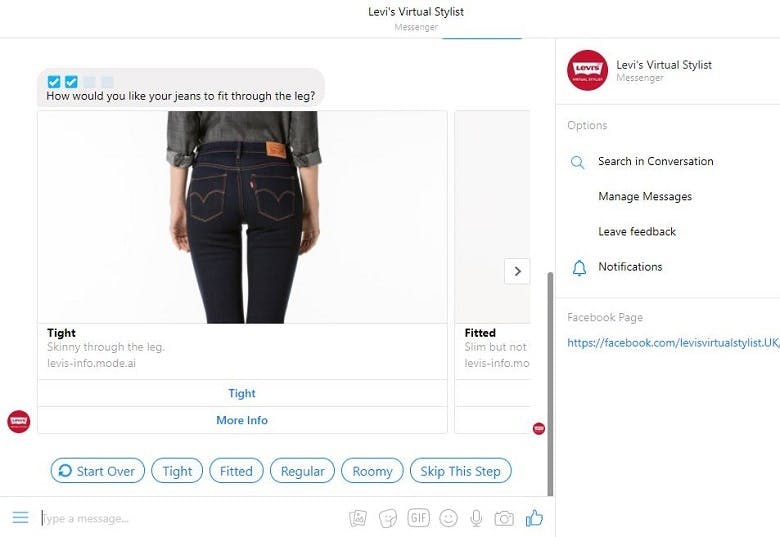
Another benefit is that it uses True Fit technology, which is designed to increase the chances of retailers providing customers with the exact fit, which in turn helps to reduce the likelihood of returns.
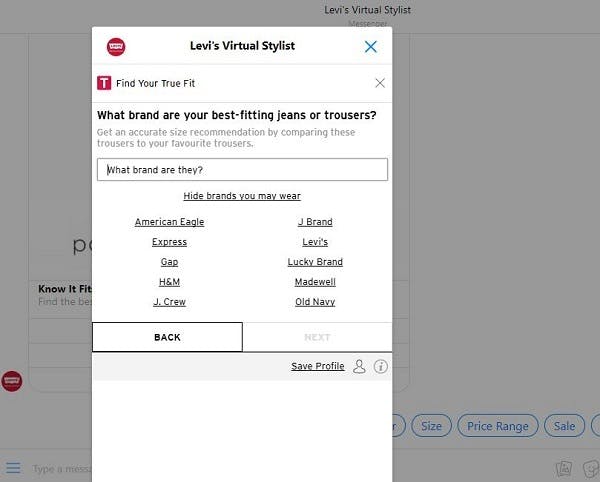
As well as providing helpful advice, the chatbot also effectively saves the user time, taking away the need to browse on the website or look around in-store.
Does it matter that the bot is clearly a bot – i.e. that it does not sound like a human? If it offers something of real value, which the Levi’s example does, I don’t think users will linger over this disappointment for very long.
Better integration
One of the biggest barriers to chatbot success has been the fact that many consumers do not know they exist. Many brands have failed to promote their bots, instead relying on users to stumble across them on Facebook or seek them out themselves.
Recently, however, Facebook has launched a new plug-in which could help to combat this issue. It allows businesses to integrate Messenger into their own websites, allowing users to interact with the chatbot on mobile, desktop, and tablet devices.
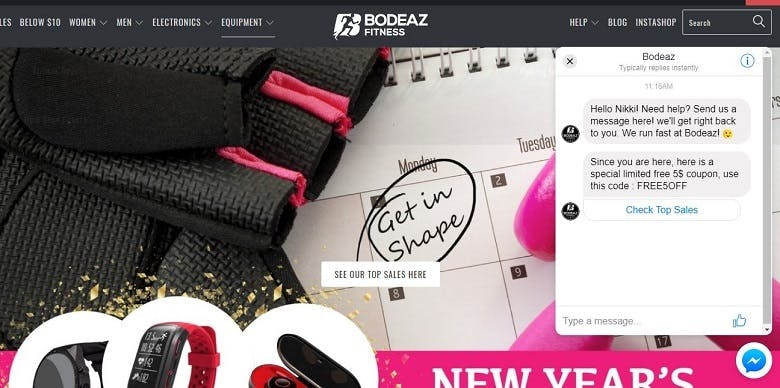
In some ways, this negates why Messenger chatbots exist in the first place (with the idea that users spend most of their time in this channel), however it certainly means that bots will become less of an isolated medium, and users will become more aware of the service as they naturally browse on brand websites.
Plus, it also means that users will be able to visit Messenger at a later date to re-read or continue the conversation. With regular live chat on brand websites, users are typically required to start over again if they click away or end the conversation.
Lastly, Facebook has also taken steps to help users discover chatbots in its own platform, with the launch of a new ‘Discover’ tab within Messenger. By suggesting recommended brand chatbots, Facebook is clearly placing a renewed focus on the medium, hoping that users begin to look to bots for problem-solving rather than fun and entertainment.
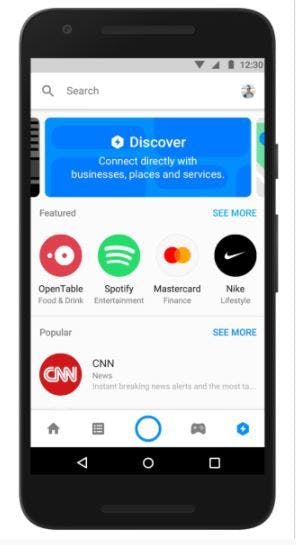
So, will other brands (other than fashion and beauty) start to invest as a result? Perhaps, but with aforementioned benefits of AR integration and personalisation – it’s clear why these industries in particular are still intent on reaching out to consumers in this way.
Related reading:

Comments